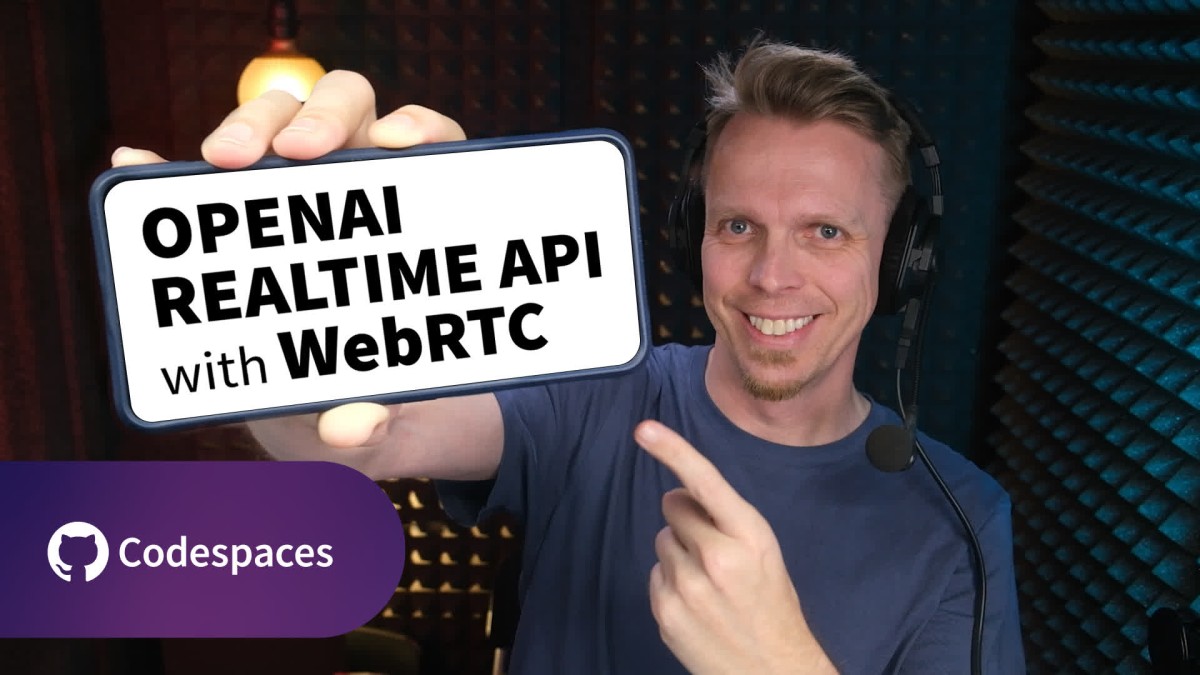This is the repository for the LinkedIn Learning course OpenAI API: Building Front-End Voice Apps with the Realtime API and WebRTC. The full course is available from LinkedIn Learning.
With OpenAI’s Realtime API, you can build a custom real-time voice-to-voice AI chat into any front-end web app or other app through WebRTC. In this course, you’ll explore how the Realtime API works, see how to set up a secure WebRTC connection with ephemeral tokens, and get hands-on examples of how to add custom real-time AI chat with voice, text, and function calling into any web app using JavaScript.
These exercise files are best used in GitHub Codespaces. The project contains five folders with example implementations of OpenAI's Realtime API in vanilla JavaScript:
./01-basic-JS/: A bare-bones reference implementation./02-audio-visualizer/: A built-out implementation utilizing the Web Audio API for voice visualization./03-voice-and-text/: Adds text chat input and output to the app./04-transcriptions/: Adds the voice input and output to the text chat as transcripts./05-function-calling/: Adds function calling
The project also contains a basic Node.js-based auth server to supply the front-end app with an ephemeral token for authentication. It is found in the ./auth-server/ folder. If you're running the exercise files in GitHub Codespaces, the dependencies for the auth server are automatically installed. If you're running the exercise files on your local computer, follow the steps below to install them.
- Open the repo in GitHub Codespaces or clone it to your computer.
- If you're on a local install, open terminal and run
cd auth-server && npm installto install dependencies.
- If you're on a local install, open terminal and run
- Visit the platform.openai.com to create an API key for the project.
- Make a copy of
/auth-server/.env-templateto create a new.envfile in the/auth-server/directory with the following:
OPENAI_API_KEY=your-api-key- Run the server from terminal by navigating to the
/auth-server/directory and running
node server.js- For Codespaces:
- Go to Ports, identify the live URL for the auth server, and it to
server-config.js. - In
/01-basic-js/, setSERVER_URLinapp.jsto the same auth server URL.
- Open
index.htmlin your browser to access the all the demos. - To stop the auth server, run
Ctrl+Cin the terminal.
Morten Rand-Hendriksen
Senior Staff Instructor, Speaker, Web Designer, and Software Developer
Check out my other courses on LinkedIn Learning.
